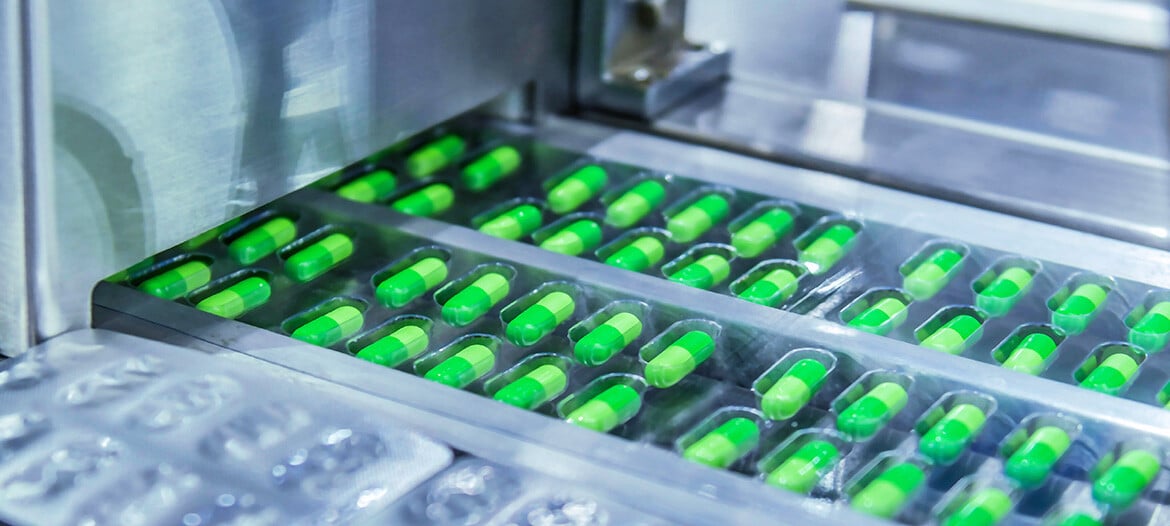Five Lessons Learned from the Front Lines of COVID-19
The following edited excerpts are from a panel discussion hosted by the ELPRO Leading Minds Network as part of its “Temperature Control Tuesdays” programming in partnership with Biocom California. The session included Geoffrey Glauser, former Pfizer/Merck supply chain executive and consultant to the US Department of Health and Human Services/ASPR/BARDA; Rich Nelson, senior manager of global logistics for packaging coordinators at PCI Pharma Services; and Victoria Wilmore, director of the temperature control support center for Johnson & Johnson. All were involved in Operation Warp Speed and the distribution of COVID-19 vaccines under emergency use authorization.
Key Points to Learn about in this Blog Post
-
Learn how contractual processes have been adapted to meet particular challenges posed by the Covid-19 crisis.
-
Discover how suppliers, manufacturers, couriers, and the U.S. government averted the battle over limited materials, flight availability and containers.
-
Read about the impact of end-to-end, fast, and open communication between all stakeholders on the success of the Warp Speed operation.
Lesson #1
How were contractual processes adapted to the challenges posed by the Covid-19 crisis?
Optimized, flexible (contractual) processes and a responsive supply chain. PCI Pharma Services completely transform their quotation process. From a typically cyclical process and the involvement of many departments, PCI Pharma Services turned it into a shorter streamlined process in which they obtained vaccine sponsors' assessment on many aspects very early on and were thus able to submit offers much faster.
PCI has also become more proactive in terms of the supply chain. Whenever their customers were "ready-to-go," they had to be, too. To avoid tedious search for materials and components that were in short supply, PCI kept sufficient supplies and all packaging components in stock and found standard solutions, for example for labeling, for which they did not have to order any special materials.
Forced to drive on site with regard to quantities, recipient countries and temperature requirements in the beginning, they made contractual changes uncomplicated for customers and agreed that they would flexibly adjust bills of quantities and cost estimates in line with the changed circumstances.
Everything was so up in the air every day.
Rich Nelson, PCI Pharma Services
Continuous reviewing and adjusting of decisions in close cooperation with suppliers. Entering into contracts with limited information on volumes of vaccines, the origin or shipping site, distribution centers and destination countries or customers, Johnson & Johnson had to review decisions and correct them if necessary. Many governments have imposed export regulations or bans. In this situation, they have learned that the only way to achieve success is through particularly close cooperation, even partnership, with suppliers.
That’ll mess up your supply chain.
Victoria Wilmore, Johnson & Johnson
Making compromises on all sides. The U.S. Government needed to avoid a struggle for limited resources due to shortages of syringes, needles, vials, and ancillary supplies and the growing needs of manufacturers. Thanks to regulation they were able to build a global supply chain that fairly served all stakeholders. The key was to make compromises on all sides.
Lesson #2
Cancelled flights, declining flight availabilities, work from home –
how did you manage to move your supplies?
Military influence and clause for defense. The U.S. Government organized military flights, although not very many. They ensured the manufacturers of their support if they had to exert more influence on the allocation of flight availabilities. The U.S. Government also invoked the clause for defense of the country and was able to persuade airlines to provide additional cargo space or to prioritize it in favor of the vaccine manufacturers.
Flexibility, creativity, and stable networks. Once the locations and countries for the clinical trials were determined, and PCI Pharma Services knew what temperature conditions they had to achieve, they contacted all of their available specialty couriers. They sent availabilities and schedules and all available information on particular lanes. PCI broke down shipping lanes in detail and distributed them to all available couriers so as not to overwhelm anyone, not to depend on anyone, and most importantly, to be able to transport everything.
If certain lanes could not be served, PCI requested cargo flights and chartered private planes. They also requested large Contract Research Organizations (CRO) with their own corporate jets and booked their couriers on the flights. Where possible, PCI’s couriers also used the road driving teams for deliveries in the USA and Canada.
We had to break out of what I consider our traditional logistics plan.
Rich Nelson, PCI Pharma Services
Setting priorities. Johnson & Johnson could rely on many established lanes andprioritized them. Whenever lanes were changed, they had to perform risk assessments regarding temperature control as quickly as possible. They asked, “Is this going to be a viable option with the current setup, or do we need additional monitoring or additional protection?” Is there a better way phrase this? “Shipping lane simulation tools will prove to be important capabilities to pandemic response in the future.
It was a matter of prioritization.
Victoria Wilmore, Johnson & Johnson
Lesson #3
How was extra demand managed and prioritized?
Cooperation, negotiation and balancing demands and materials. The U.S. Government asked manufacturers for their production rates and negotiated about minimum daily, weekly, and monthly requirements. They agreed upon weekly basis demands and three-to-five-weeks of inventory and, by this, were able to balance out the needs for the materials.
At the same time, the U.S. Government worked closely with the states, which had to provide accurate plans on locations, quantities, inherent cohort populations that needed immunizations. They then worked with the manufacturers to plan the global distribution of their vaccines.
Prioritize and talk about it. Normally, PCI Pharma Services do not change priorities in clinical trials. , they deviated from this for the first time and, if necessary, gave priority to Warp Speed sendings. They communicated this decision clearly to everybody along that entire supply chain.
Lesson #4
How were container sourcing, qualifications and approvals handled, considering the need for global distribution?
Following a global approach from the beginning on. Johnson & Johnson have taken a global approach from the beginning, both in terms of suppliers and temperature profile qualification. As countries of origins and destinations were not yet determined, they decided for a good mix of the different regions. Given criticality and the speed that is needed for their vaccine, Johnson & Johnson have qualified for a global profile that would apply to any region. Many shippers were qualified for 2 °C to 8 °C for other products; and if a carrier was not on the approved supplier list, Johnson & Johnson had ways of doing conditional and emergency approvals.
Multi-functional approach and deep knowledge about timelines of boxes. 90% of PCI Pharma Services’ shipments are temperature controlled whether it's controlled room temperature all the way up to shipping in liquid nitrogen. They decided for a multi-functional approach, where the same box, pre-qualified to hold 2 °C to 8 °C for 120 hours, can hold -20 °C for a hundred hours or -80 °C for 120 hours. PCI had quantities of inventory set up so that they could adjust internally. In casethey needed to cooperate with couriers (i.e. for full pallet-sized boxes), they made sure to book those out and get priority for them.
PCI used their extensive knowledge about the conditions of different containers. They asked, “Do they last for two days, or four, or six? Do we need active containers? Or do we need to replace cooling packs or temporarily store the shipment at certain temperatures for a certain time to recharge the cooling packs?” PCI shared this knowledge with their pre-qualified shippers, so they knew exactly what timelines they had given boxes to avoid temperature control issues.
Intervene only if necessary. The U.S. Government was willing to interfere with real restrictions with FedEx or UPS or international DHL deliveries. They have ensured that major carriers got forecasts from each of the manufacturers to get a good idea of what they were facing and the timing, which was based on days of the week.
Lesson #5
Which role did communication and monitoring play in this emergency situation to ensure that business could continue and that enough staff were available to meet the increasing demand?
Communicate priorities, rely on contract operations, be open to new sets of communications. From the U.S. Government’s point of view the following aspects have proven themselves:
- Communicate changing priorities to suppliers and customers such that they know ahead of time what to expect.
- Make sure you can rely on contract operations to be able to take up the need and the buffer for the volume.
- Be prepared for an unusual set of communications operations associated with additional suppliers (prime supplier talks with subsidiary talks with subcontractor talks with prime supplier etc.)
Put all resources into communication. Johnson & Johnson have put all available resources into monitoring and communication. They have proven that they can do it if everyone pulls together. But this 'all-hands-on-deck' strategy is not sustainable. That's why Johnson & Johnson asked themselves and are working on that question now, internally to J&J, and with the suppliers and governments as well:
How do we take the best practices from before and make them more sustainable?
Victoria Wilmore, Johnson & Johnson







Leave a Comment